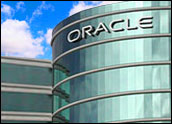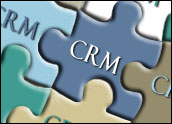
It’s long been a management axiom that the knowledge and abilities of employees are among the — if not the — most valuable of an organization’s resources. While this is generally held to be true — even in capital-intensive industries — it is particularly valid for knowledge-intensive businesses.
Every year, companies spend and invest large sums on recruiting, and on developing better ways to both attract and retain employees. Human resources (HR) departments are typically the linchpin in the process, working with colleagues across the organization to define and determine hiring needs, develop and carry out recruiting campaigns, and coordinate and administer every facet of the recruiting and hiring process — including making job offers, ensuring regulatory compliance and getting new employees on the payroll.
HR departments were among the first — and remain among the largest — customers for database, ERP (enterprise resource planning) and CRM systems developers due to the organization-wide, data-driven and data-intensive nature of their activities.
Previous generations of such technology lent themselves well to the more administrative aspects of HR as opposed to processes that entail more in the way of judgment, such as recruiting. That’s changing with the advent of Web 2.0 technology, which can enhance data gathering, application customization, systems deployment and end user communications.
Recruiting, CRM and ERP
The need to streamline administrative and strategic management processes is driving growth in the market for HR software, according to Michelle Newell, Oracle’s senior director of human capital management product marketing. “The HR market segment was measured in 2007 by IDC at (US)$4.9 billion and is growing at an average CAGR (constant average growth rate) of 8.3 percent,” she noted.
“Many companies understand that in order to differentiate their organization, product, or service offering they must have a high-performing and stable workforce. Only those with effective talent strategies and the supporting talent management software and services offerings will succeed,” Newell said.
Developers at companies such as Oracle, with its iRecruitment and the Oracle Human Capital Management platform, join those at CRM, ERP and specialist software companies, such as Attract HR, iCIMS, Lawson and Sage Software, taking advantage of the latest generation of internetworking, Web application services development and systems integration methods and tools to do so.
Providing Software as a Service (SaaS) application development tools and hosted systems platforms, vendors such as Salesforce.com are enabling customers to build their own recruitment systems software, connect it with other HR systems and even offer it to third parties.
Data-Driven Processes
The huge volume and nature of data managed in a typical corporate human resources department aligns well with the use of CRM and ERP systems, pointed out Adam Feigenbaum, director of marketing and sales at iCIMS. “Whether managing communications with job seekers or benefits for employees, these data-driven processes lend themselves to the benefits offered by efficiency software.”
“Fundamentally, HR departments keep themselves organized by using a database, and the functionality is very similar to CRM. If you think about employees as ‘internal customers,’ the analogy is quite simple. Just as CRM helps streamline customer acquisition and manage a customers needs once they have come on board, HR applications help to simplify and organize the recruitment and retention of employees — many of the same principles apply,” added Bruce Francis, Salesforce.com’s vice-president of corporate strategy.
Among the most relevant benefits Feigenbaum said CRM/ERP applications offer HR departments looking to upgrade their recruiting systems are the following:
- Communicate new career opportunities to broad applicant pools;
- Streamline online application methods for job seekers;
- Simplify the new hire paperwork associated to bringing on new employees; and
- Build a talent database to more easily identify internal talent for growth/development opportunities at a company.
360-Degree Views
To be truly effective, recruiting solutions should enable organizations to advertise employment opportunities and build relationships with top candidates and employees using an efficient, paperless, online method, Oracle’s Newell told CRM Buyer. “It should be designed to help candidates search for employment, apply for positions and track their progress through the recruitment process.
“Other key features are 360-degree views of candidates, global capabilities and workflow-enabled processes. In order to truly harness the value of the new hire, recruiting processes, requisition and interview information should flow seamlessly into performance management, goal management and development processes once the new employee is on-boarded.”
Sage Software aims to support the recruiting needs of mid-sized businesses with anywhere from 50 to 1,000 employees with its Web-based Abra Recruiting Solution, part of the Abra HRMS suite. “Recruiting solutions shorten the time that open positions go unfilled. They also provide easy integration of online recruiting methods, which can reduce an organization’s cost-per-hire,” explained Tom Tillman, director of product marketing for Sage Abra HRMS and Sage TimeSheet.
In addition to improving the capture and flow of information related to recruitment, well-designed online systems also offer organizations an employment advertising option that is significantly cheaper than traditional methods. A recent study found that the cost-per-hire of Internet recruiting averaged $377 while advertising in a metropolitan newspaper averaged $3,295 per hire, he noted.
“An efficient recruiting process also enables HR to conduct more candidate searches in-house, lowering external recruiting costs,” he added.
The Recruiting Niche
Though some HR departments are using CRM and ERP application modules to support their recruiting activities others are looking to purpose-built applications to support them, according to Darren Revell, CEO of Attract HR. “A CRM-ERP system is not guaranteed to make any improvements on recruiting and hiring employees. For that HR departments are turning to recruitment management systems (RMS) software products to work in conjunction with their main HR system,” he said.
“HR vendors have lost ground to RMS vendors. The main HR players have concentrated on delivering sound and effective HR software, but the recruiting components are very poor in most cases, and very restrictive in terms of what the recruiter can do so RMS vendors have filled this gap with specialist software tools,” Revell told CRM Buyer.






















































